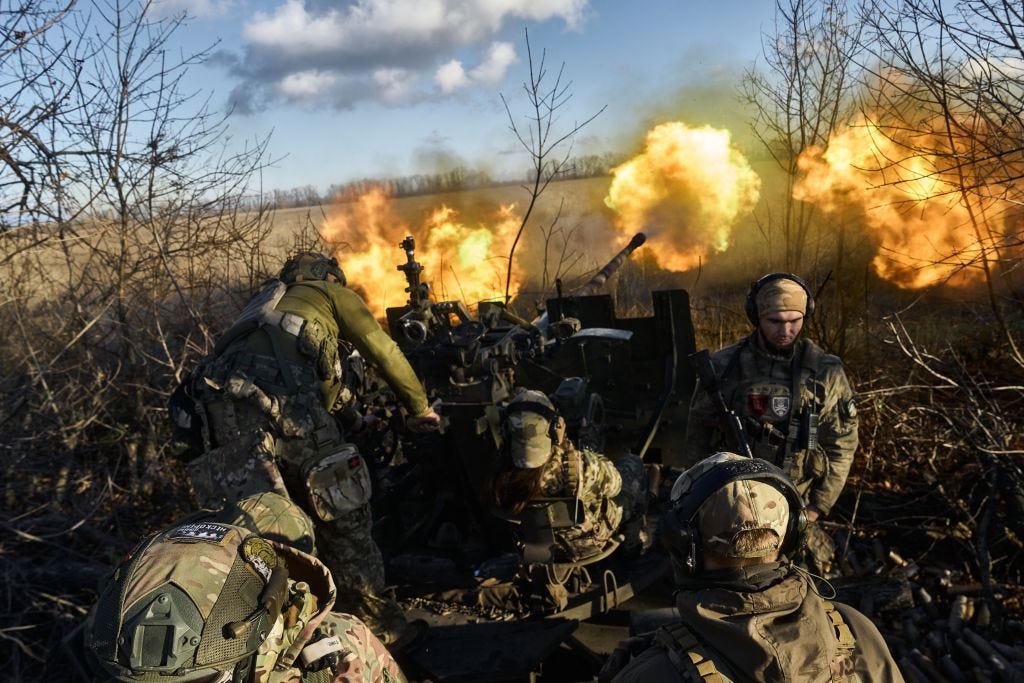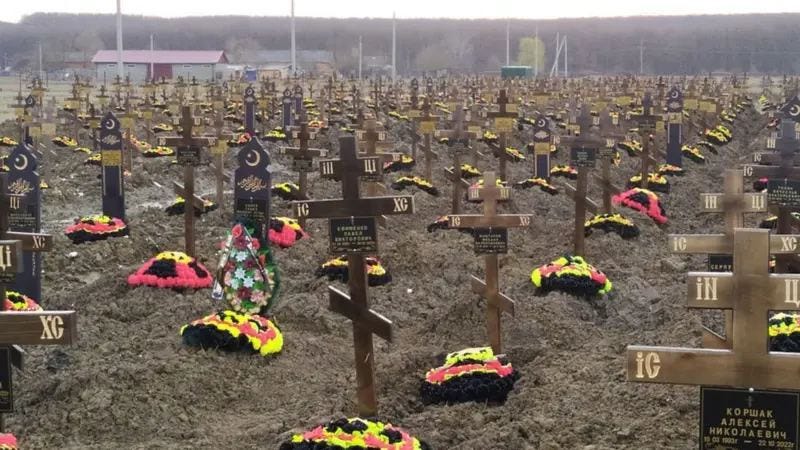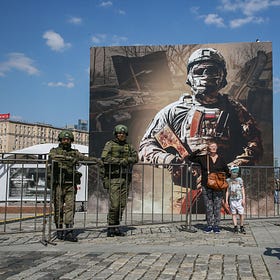‘Immoral but effective.’ How the ‘Wagner’ private military company lost 17,000 prisoners in the assault on Bakhmut
BBC Russian continues its investigation into the Kremlin’s war dead in Ukraine.
By Olga Ivshina, Olga Prosvirova.
As many as 20,000 Wagner fighters were killed during the Russian assault on Bakhmut. More than 17,000 were convicts sent to the front from prison camps and pre-trial detention centres.
Working with the Mediazona news outlet, BBC Russian has gained access to the personal data of these men and can reveal that the late Wagner leader Yevgeny Prigozhin’s statements about losses in the capture of the city, which were met at the time with disapproval even by pro-war bloggers, were heavily whitewashed.
The Wagner archive
In a well-known video from May 2023, Yevgeny Prigozhin is seen filmed against a backdrop of corpses, yelling into the camera at the defence minister and chief of staff: “Shoigu! Gerasimov! Where is the f****** ammunition?!”
At the time, his claim was that heavy losses among his mercenaries during the attacks on Bakhmut could be blamed on the unresponsiveness of the defence ministry and a shortage of shells.
But the data we have seen shows that the highest daily casualties – more than 200 men a day – were being sustained by Wagner far earlier, in January that year. Prigozhin subsequently admitted that he had lost 20,000 mercenaries in the battles for the city, but said that only half of them were prisoners.
“I selected 50,000 prisoners during the operation and about 20% of them died,” he told pro-Kremlin political strategist Konstantin Dolgov just after Bakhmut’s capture. “The same number of men who joined under contract, rather than from jails, also perished.”
The BBC and Mediazona obtained a complete list including the personal data of 19,547 dead Wagner fighters, of whom not half, as Prigozhin claimed, but fully 88% - or 17,175 men – had been prisoners.
The documents in question concern compensation payments of five million roubles for the death of a Wagner fighter on a standard contract. Our source has received the lists of ‘coffin’ payments in August 2023, soon after the death of Prigozhin. We do not have data for salaries and injury payouts.
In addition, relatives have frequently told the BBC of the difficulty in confirming the status of a Wagner prisoner-fighter. For that reason, counting up losses and paying out compensation amid the bloodshed can be a very drawn out affair.
This is the most significant source of data on Wagner losses we have encountered during our project to keep track of Russian casualties in the full-scale war on Ukraine.
We know the call signs, dog tags and dates of death of each of these men, and the majority of their surnames. The documents lack around 1,000 names - 6% - but that does not prevent the categorisation of their deaths since the dog tag makes it plain if the soldier was recruited from jail or civilian life.
But even Prigozhin’s own massaged casualty figures presented a problem for the Ministry of Defence and its plan to push a story about the ‘victory’ in Bakhmut. The conversation, even among ‘Z-bloggers’, turned into a discussion of the catastrophic losses, and whether commanders ought to be receiving medals for the city’s capture in the first place if more men had died there than in nine years’ fighting in Afghanistan.
Prigozhin’s statement had enabled him to kill two birds with one stone: highlight the value of his mercenary outfit while belittling the defence ministry. At the same time, he was promoting the image of his project – and lies about the ratio of losses served this purpose, too.
The recruitment of new forces to Wagner depended on this image, which Prigozhin’s team spent a lot of time curating. They promised former convicts that they would be treated as equals, not as second-class citizens:
"60% of my guys are assault troops, and you will be one of them. You will be no different from the rest of us. You will be treated the same, sometimes more leniently than men who have been fighting alongside me for many years and have gone through dozens of wars," Prigozhin claimed, speaking at the parade ground of Penal Colony 6 in Mari El.
So a lie about the conditions on the battlefield at Bakhmut, and the numbers of dead prisoners, was essential to keep up Wagner’s reputation in the eyes of a new wave of prisoners hoping to avoid serving more jail time.
Project "K"
Wagner began recruiting prisoners from the camps in early July 2022, starting in Prigozhin’s home region, Leningrad Oblast. Information about the programme first emerged from the high security Yablonevka prison in St. Petersburg, home to repeat offenders. The first group of newly-minted Wagner fighters, several dozen men, left the prison on the night of July 6th.
The ‘Vazhnie Istorii’ outlet guessed that the first group numbered 35-40 men, and it turns out to have been a good estimate: the serial number of the last dead man from Yablonevka was 35. Eight ex-convicts were to die from among this group, we learned.
Among them, Konstantin Tulinov, who had featured as a hero in the pro-Kremlin television show hosted by Nikita Mikhalkov. He had ended up in a strict regime colony after a video of the future ‘Hero of the Donbas’ emerged online showing him beating up a man to extort money.
A second seed ground was also developed in St. Petersburg, at the Obukhova penal colony No. 6. Prigozhin specifically sought out men sentenced for murder and robbery, thinking they would be more useful on the frontlines.
"Who do we need?.. The ideal candidate, so to speak, is an Ilya Muromets [a mythical warrior from Russian folk legend] from a strict regime, not a first-time offender,” he said at a parade ground speech.
“He will be 30-45 years old, strong, confident, and resilient. Ideally, he should have served at least 15 years, with another 15 years ahead of him. Preferably, he should have been convicted more than once for murder, grievous bodily harm, robbery, or burglary. If he has beaten up some bureaucrats or cops—that's even better. We need your criminal talents."
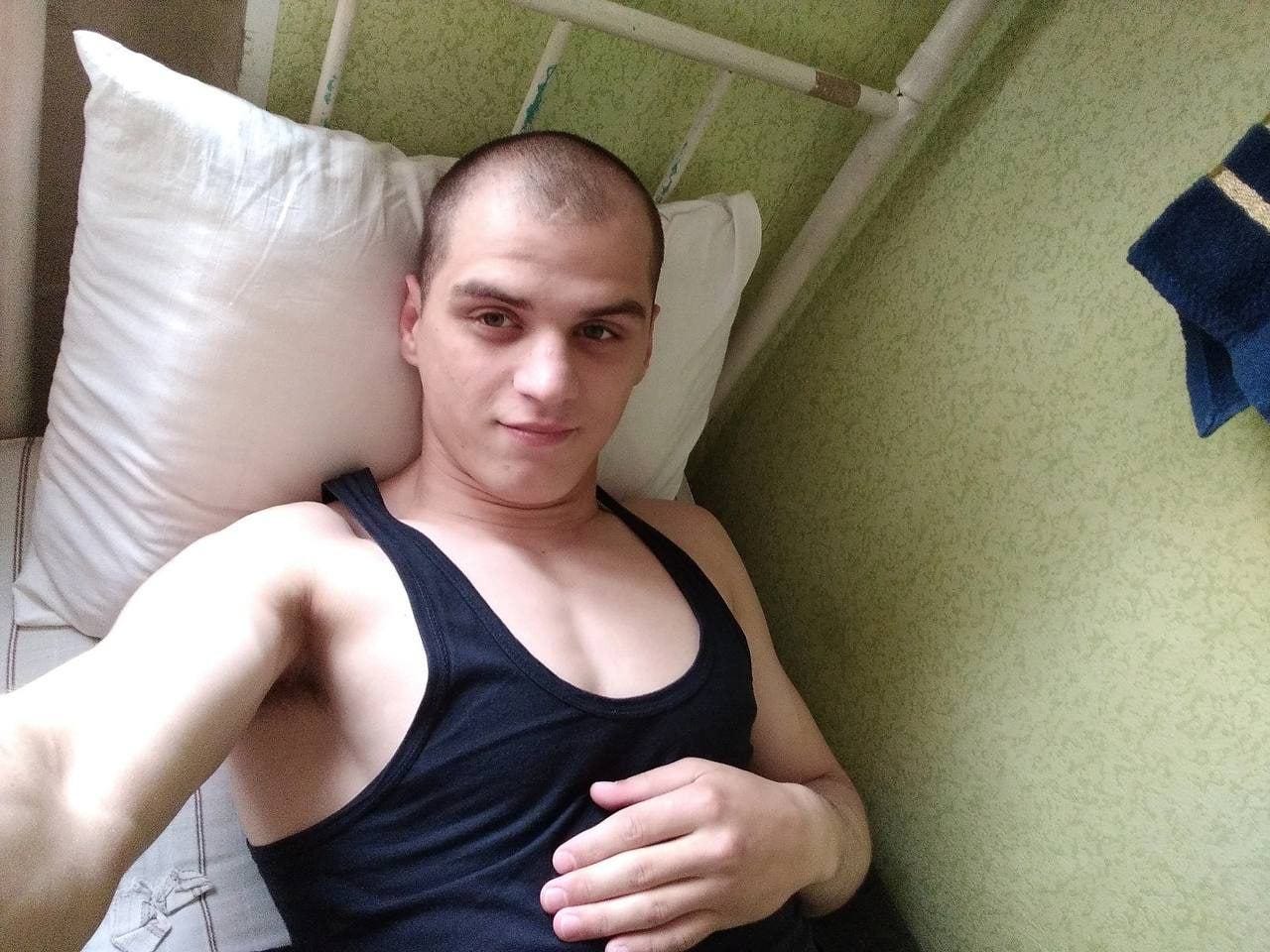
There were plenty such men among the first recruits. Vyacheslav Kochas, for example, sentenced to 18 years strict regime in Obukhovo for robbery and murder with especial cruelty.
But there were also first-time offenders, like Dmitry Karavaichik, nicknamed the ‘Russian Walter White’ by the media and imprisoned for creating a criminal gang to distribute amphetamines. He survived the fighting. Later, Wagner began the wholesale recruitment of inmates convicted on drugs possession charges.
In this way, ‘Project K’ was started at two strict regime prisons in Leningrad, and named most likely after the ‘K’ on the dog tags of all the Wagner prisoners – which may denote the word ‘colony’.
The dog tag consists of six digits. The first three are a code for the prisoner where the man was recruited and the last three are his serial number. This information meant we could identify most of the prison camps where Prigozhin conducted his recruitment campaign.
It expanded rapidly into other regions. The largest batch of prisoners came from colony No. 6 in Krasnoyarsk – more than 500 men from a total prison capacity of 1,410. 136 of them died.
The next biggest recruitment was from colony No. 2 in Krasnodar Krai’s Dvubratsky village. Prigozhin took more than 340 men of a total of 2,000 prisoners, of whom 119 were to be killed. A similar number of convicts left the gates of colony No. 3 in Irkutsk Oblast (112 died) and No. 5 in the village of Startsevo, Krasnoyarsk Krai (102 people died).
Prigozhin would often tour the prison camps in person. As well as St. Petersburg, he was seen in Yaroslavl, Tula Oblast, and the Republic of Mari El.
During one of the tours, he said that Wagner prisoners began fighting "experimentally" on July 12th, 2022. Experts disagree about the exact date on which one can say the battle for Bakhmut got underway. Prigozhin himself said it began on October 8th. And that is the date engraved on the Wagner campaign medal for the ‘Bakhmut Meat Grinder’. Yet fighting in the outskirts began much earlier than that.
"We fought near Bakhmut," Dmitry Karavaichik, (then still using a pseudonym, was recorded as saying. "We captured the Uglegorsk power station, and then it got harder—Otradnoye, Nikolaevka [near Bakhmut—BBC]."
The first prisoner-fighter was killed on July 15th at the power station he mentions.
Assault groups
Bakhmut had a pre-war population of 70,000. Russian troops reached the outskirts in July. For many months, it remained the chief battlefield of the war. Ukrainian troops held on to the city to protect routes to Kramatorsk, Sloviansk, Siversk, and Toretsk. But the strategic value was outweighed by a growing political significance as the ‘meat grinder’ death toll rose.
Prigozhin stated that there was no serious strategic value in Bakhmut and the assault on the city was designed to draw large numbers of Ukrainian troops into battle and thereby allow Russian forces respite and time to mobilise reserves. Washington, though, believed Prigozhin’s obsession with the city had a more pragmatic focus: gaining control of the salt and gypsum deposits in the region. The largest salt mine in Europe is near Bakhmut.
Wagner’s tactics in the city were wave-like attacks by small groups. Prisoners were in the vanguard, as Prigozhin had promised. Each group was composed of eight to a dozen men.
“The prisoners would be sent first onto the Ukrainian positions, and that would force the Ukrainians to reveal themselves and engage with their close support weapons, their heavy machine guns and possible with artillery in some cases. That would give the Russians an opportunity to locate those systems, those strong points, those positions and engage them,” says British military expert Samuel Cranny-Evans from Royal United Services Institute, a think-tank.
The vanguard squads that revealed these positions usually died or were seriously injured.
The dog tag numbers for dead prisoners that we analysed suggest Wagner recruited at least 48, 366 men from prison colonies. The figure lines up with Prigozhin’s own statements, and estimates from human rights organisations and western military intelligence, all of whom cited 50,000 prisoners as the number recruited by Wagner for the war.
35% of these men – 17, 251 – were killed. Those who survived, according to Wagner fighters themselves, were those who had sustained serious injuries (such as the loss of a limb) and had been evacuated from the battlefield. But waiting to be evacuated could be a challenge in itself:
“Assault infantrymen are not allowed to independently evacuate the wounded from the battlefield, as their main task is to continue the assault until the objective is achieved. If the assault fails, retreat is only permitted at night,” stated a report by Ukrainian intelligence.
The use of prisoners meant Wagner could ensure a critical mass of men for multiple waves of attack while preserving a skilled core of professionals, says Cranny-Evans.
“The Wagner tactics had two effects. That one is, attrition of the Ukrainian forces, and the other is, exhausting Ukrainian ammunition, which is which has always been fairly scarce,” he notes.
Strict discipline harshly enforced maintained the assault groups’ methodical work.
“Assault groups do not retreat without orders… Unauthorised withdrawal of a squad or retreat without receiving an injury is punished by execution on the spot,” noted a Ukrainian intelligence report from December 2022.
How they died
Our work with Mediazona shows that those prisoners sent to the front in the summer and autumn of 2022 had a higher chance of survival. Those who went to war later were far more likely to be killed.
The summer of 2022 saw Wagner engaged in small-scale battles for settlements close to Bakhmut, and by August the Russians had managed to occupy the eastern outskirts of Soledar. But this is where the advance stalled.
The number of prisoners being killed began to increase sharply from mid-September. Prior to that, around 20-25 had died each week, but starting from September 12th, the number rose to more than twice as many.
According to Russian propagandists, that was the moment the military reached Bakhmut and occupied its industrial zone, and when the Ukrainian armed forces counterattacked and shelled Wagner with artillery. The propagandists said the Ukrainian effort was unsuccessful, but the casualty figures suggest otherwise.
“The high rate of casualties among prisoners is because these troops were undertrained, and treated as expendable, performing tasks that fixed and then enabled Ukrainian troops to be engaged by others,” explains Jack Watling of the RUSI.
“Wagner's losses were highest at the start of periods of assault when the defences were best prepared and the Russians had not engineered any local advantages.”
At this time, Prigozhin took a number of steps uncharacteristic of him: he appeared in videos with three hero stars emblazoned on his uniform, and he acknowledged directly for the first time that Wagner belonged to him. A video also surfaced of him recruiting prisoners in a jail yard. Experts suggested this not only showed Prigozhin highlighting his value, but also moving to boost authority for his prisoner recruitment model.
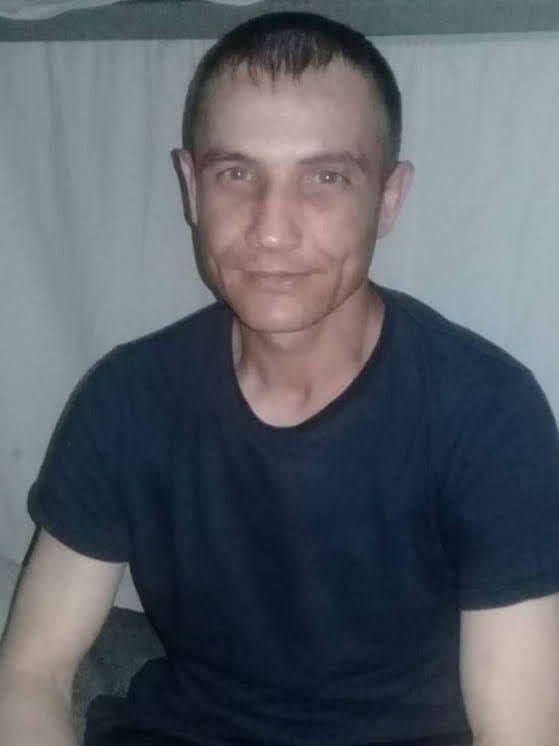
Wagner recruiters also became more active. That same month, September 2022, they arrived at Saratov’s Prison Colony No. 7. Ivan Chigin was one of the prisoners listening to the speeches in the yard. He was serving 15 years for burning someone alive.
Five years earlier, in late December 2017, he had visited an acquaintance in a neighbouring village and found a group of men celebrating the coming New Year. When the vodka was finished, one of them went for moonshine, and came back saying it was pure alcohol.
As Chigin later explained during his interrogation, at some point he decided to check if the alcohol really was as pure as the man claimed. He knocked him to the floor, kicked him several times, then doused him with liquid from the bottle and set him on fire. After ensuring that the alcohol-soaked acquaintance was indeed burning, Chigin left. By morning, the man was dead.
So he signed a contract with Wagner in September 2022 along with 115 other prisoners from the same camp, and set off for Ukraine. One in four of them – 32 men – were to die at the front, Chigin included.
"Immoral, but effective"
In the autumn of 2022, Bakhmut remained the epicentre of military activity, though the fighting was mostly positional in nature. Artillery bombardments continued, and frequent small-group assaults resulted in hundreds of deaths, but neither side could boast of meaningful successes.
In those months, Prigozhin tried to defend the idea that even a 100-metre advance amounted to ‘substantial progress’, but military analysts described the situation as a failure for Wagner.
By mid-November, the weekly losses for Wagner did not drop below 400 men, and 90% of these were dead prisoners.
In December, Wagner managed to break out of the industrial zone in the eastern part of the city and reach the residential areas of Bakhmut. They also captured villages opening a path to Soledar, an important suburb of Bakhmut. By the end of that month, Wagner had now seen the deaths of nearly 7,500 men.
The next month, January 2023, Prigozhin and his commanders redoubled their efforts, pushing forward and losing hundreds of men each day in the attempt to take Soledar.
The recruitment of new prisoners continued unabated in parallel. A batch of 51 men from Kirov’s Colony No. 1 were sent to the front and within two months more than half were dead. Our data shows that for those joining up in January, the survival rate had fallen to 50%, compared to 75% in the autumn, just a few months earlier.
On January 29, Prigozhin reported the capture of the village of Blahodatne north of Bakhmut – at the cost of 1,002 men in a week-long assault. That works out at eight bodies for each village resident, based on pre-war population figures. 96% of Wagner casualties were now prisoners.
"Honestly, it's genius. A cruel, immoral, but effective tactic. It worked," said a Ukrainian soldier who defended Bakhmut when describing what it was like to face the wave attacks of Wagner's convict soldiers.
Casualties among civilian non-convict recruits to the mercenaries remained low – roughly 40-50 per week – until March.
"Initially recruitment from prisons was aimed at bringing inmates with military experience into the force and they were not treated massively differently to other troops. Once prisoners were being recruited as disposable infantry, they were being used differently on the battlefield which drove a disparity in losses," says Jack Watling.
Prigozhin later acknowledged that following the capture of Bakhmut, Wagner lost its combat potential, and the mercenaries were withdrawn from the front for rest and replenishment.
But the ‘Bakhmut meat grinder’ took a heavy toll on both Russia and Ukraine, notes Watling:
“The Ukrainians succeeded in forcing Russia to culminate upon capturing the city. However, while Ukraine lost fewer troops than Russia the experience of those troops was much higher, so that the battle of Bakhmut saw Ukraine lose more experience from its force than Russia."
The capture of Bakhmut was significant not only politically: its importance in the context of Russia’s offensive operations today is growing.
"Having consolidated in Bakhmut, Russia has subsequently been free to advance on Chasiv Yar which is a much more important objective.” Watling notes. “Once that is captured it allows Russia to threaten the key logistics hubs for the Ukrainian defence in the Donbas…"
How we checked the data
To confirm the authenticity of the documents we had access to, we cross-checked them against the database of verified war dead we have maintained since the start of the war.
We found that this database already contained more than 6,800 names from the Wagner documents. We also studied social media chat rooms frequented by relatives of Wagner fighters where they exchange dog tag numbers when searching for those they served with. Everyone mentioned in them was also found in our database.
BBC is blocked in Russia. We’ve attached the story in Russian as a pdf file for readers there.
Read this story in Russian here.
English version edited by Chris Booth.
Previosly…
Surviving Storm V – the brutal reality of life on the frontline as a Russian convict fighter
A disturbing firsthand account of how a convicted drug dealer from Moscow went from prisoner to frontline soldier and now asylum seeker in France.
Counting Russia's lost troops in Ukraine: stories of desperate families
BBC Russian's Olga Ivshina talks to BBC World Service radio about her ongoing project to count how many Russian soldiers are dying in Ukraine, and what it means for their families.










